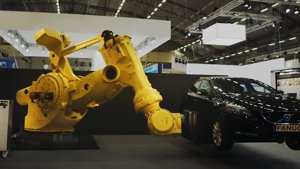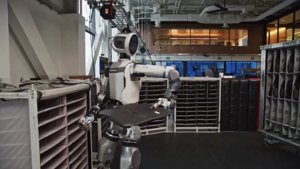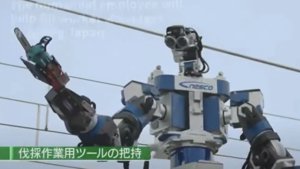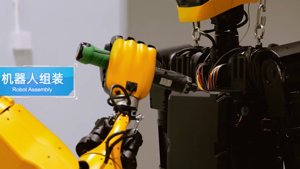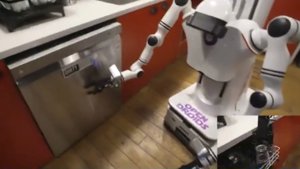For years, the robotics industry has chugged along on a rather straightforward, if utterly maddening, premise: build a robot, then build a tailor-made brain for it. A different arm, a new set of wheels, a distinct task? Time to go back to the drawing board. This painstaking, one-off approach has left us with a battalion of highly specialised boffins but nary a true all-rounder in sight. It’s why your humble Roomba still can’t whip up a decent sarnie and a factory arm can’t exactly take Fido for a trot. But what if, just what if, a single, über-intelligent AI could learn to pilot the lot?
That’s the bold-as-brass ambition at Google DeepMind, where Carolina Parada, the head of the robotics team, is masterminding a rather seismic, albeit quiet, revolution. In a recent, wide-ranging interview with The Humanoid Hub, Parada unfurled a vision that boldly swaps the fiddly, tailor-made code for a universal, gloriously adaptable intelligence. The team’s “north star,” she says, is nothing less than “cracking the code of AGI in the messy, wonderful physical world.” While the rest of the world was utterly spellbound by ChatGPT’s rather poetic pronouncements in 2022, Parada notes her team was less gobsmacked, having been knee-deep in large language models behind closed doors. The real lesson, she felt, was seeing the sheer, unadulterated brilliance of unleashing research onto the unsuspecting public.
Gemini’s Brain, In A Robot’s Body
The beating heart of this audacious ambition is Gemini Robotics 1.5, the latest, frankly rather dazzling, iteration of DeepMind’s foundational model for embodied AI that feels less like software, more like sorcery. This isn’t just another clever chatbot haphazardly plumbed into a metallic chassis. It’s a bona fide vision-language-action (VLA) model, meticulously crafted from the ground up to perceive, reason, and actually do things in our wonderfully chaotic and utterly unpredictable physical world. “Gemini Robotics adds the ability to reason about physical spaces – allowing robots to take action in the real world,” as described by Google.
The 1.5 upgrade focuses on three crucial pillars: generalisation (yes, with an ’s’ for our UK chums), interactivity, and dexterity. More importantly, it introduces what DeepMind calls “physical agents.” This system uses a two-part brain (because one just wasn’t enough, apparently):
- Gemini Robotics-ER 1.5: The “Embodied Reasoning” model acts as the master strategist. It takes a complex command, like “clean up this spill,” and deconstructs it into a sequence of perfectly logical, bite-sized steps. It can even tap into tools like Google Search to dredge up any missing information, like a digital detective.
- Gemini Robotics 1.5 (VLA): This is the motor cortex, the brawn to ER’s brain, taking the step-by-step plan from the reasoning model and translating it into the precise physical ballet of actions for whatever metallic shell it happens to inhabit.
This architecture allows the robot to “think before it leaps,” generating an internal monologue to meticulously reason through a problem, rendering its decisions not only more transparent but, let’s be honest, rather more intelligent.
The Holy Grail: Cross-Embodiment Transfer
The most utterly jaw-dropping leap, however, is what Parada calls “cross-embodiment transfer.” The idea is that a skill learned by one robot can be seamlessly, almost magically, transferred to a completely different machine, without so much as a refresher course. “It really is the same set of weights that works in all of them,” Parada explains, referring to tests across platforms as wildly disparate as the bi-arm ALOHA, the Franka robot, and Apptronik’s Apollo humanoid.
This is a truly radical departure from the industry’s rather staid norm. A task diligently learned by a wheeled robot could, in theory, subtly inform how a humanoid then performs a similar action. Mind. Blown. This is the veritable Rosetta Stone to escaping the soul-crushing, endless cycle of single-platform development. “We really believe in a future where there will be a truly broad, incredibly rich ecosystem populated by a dizzying array of robot types,” Parada states. “If we’re saying that we want to crack the AI nut in the physical world, then, to us, it means that intelligence has to be nimble enough to embody any robot, from a wheeled wonder to a full-blown android.”
This cunning concept builds rather elegantly on DeepMind’s previous groundbreaking work with models like RT-X, which was trained on a colossal dataset painstakingly pooled from 22 distinct robot types across a staggering 33 academic labs. That project demonstrated that co-training on such a glorious mishmash of hardware imbued the model with genuinely emergent skills and a far keener understanding of spatial relationships. Gemini Robotics 1.5 appears to be the supercharged, turbo-boosted evolution of this very principle.
A Shifting Timeline
The long-held dream of a machine that can simply observe a human and learn has, for roboticists, always felt like a distant, ethereal whisper. “It used to be before that everyone on the team would shrug, ‘Oh, that’s a problem for the next generation of roboticists, well after my retirement,’” Parada admits. “And now we’re actually having discussions about like, how far out are we really talking? Five years? Or are we stretching to a decade?”
This acceleration is utterly palpable, a tangible hum in the air. While Parada acknowledges that humanoids are undeniably an “important form factor,” largely because, well, they’re designed to navigate our world, with its pesky door handles and teacup-sized objects, she brilliantly pushes back against the rather narrow idea that they are the only form factor that truly matters. DeepMind’s vision is hardware-agnostic. The intelligence, you see, is the star of the show, not the gleaming metallic shell it happens to occupy.
The ultimate, Everest-level challenge? Our homes. Parada believes the home will be “one of the last, most chaotic frontiers” for robotics, precisely because it is so utterly unstructured and gloriously chaotic. A factory floor is a predictable ballet of precision; a bustling family kitchen is anything but, a veritable minefield of dropped toast and rogue toddlers.
One Brain To Bind Them All
DeepMind’s strategy represents a fundamental, high-stakes wager: that the future of robotics hinges not on ever-shinier hardware, but on a more universal, gloriously scalable intelligence. By decoupling the AI ‘brain’ from the robotic ‘body’ (a separation that would make Descartes proud), they aim to forge a foundational model capable of learning from every single robot simultaneously, compounding its knowledge across a burgeoning global fleet of machines.
It’s an approach that could finally smash through the exasperating one-robot, one-brain bottleneck that has stubbornly constrained the field for decades. We’re not merely getting a smarter robot; we’re bearing witness to the genesis of a universal pilot, poised to embody whatever magnificent machine humanity can dream up. Rosie, The Jetsons’ iconic robot butler, it seems, just took a rather enormous, cross-embodied leap forward. And frankly, it’s about time she learned to make a decent cuppa.


